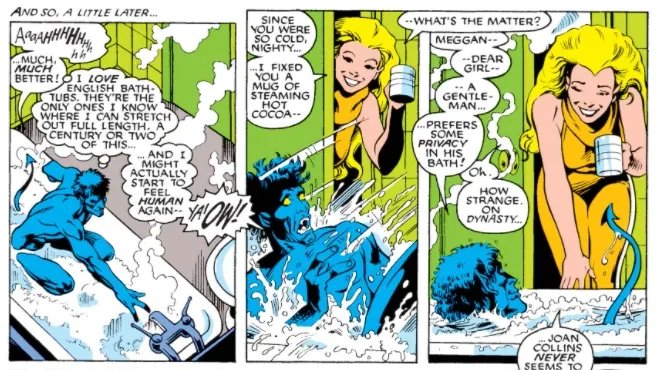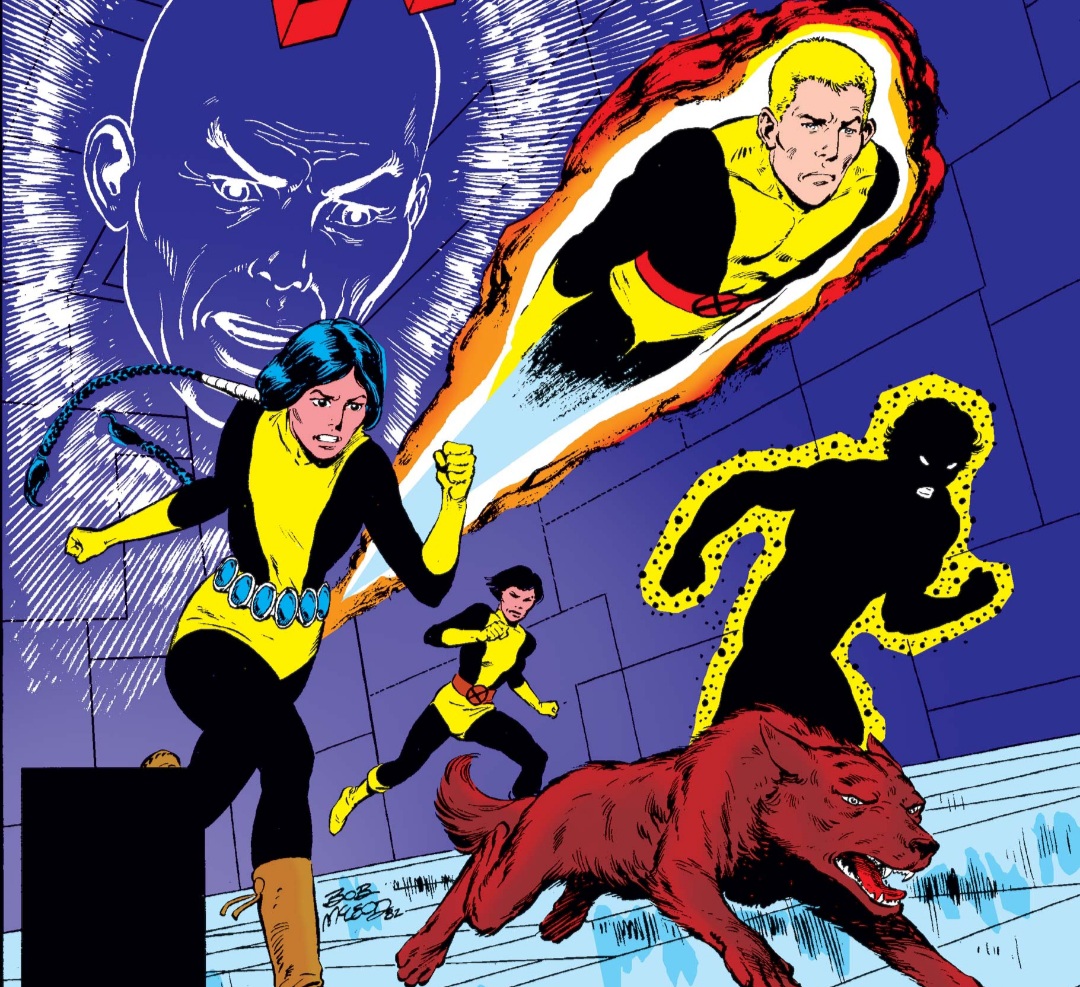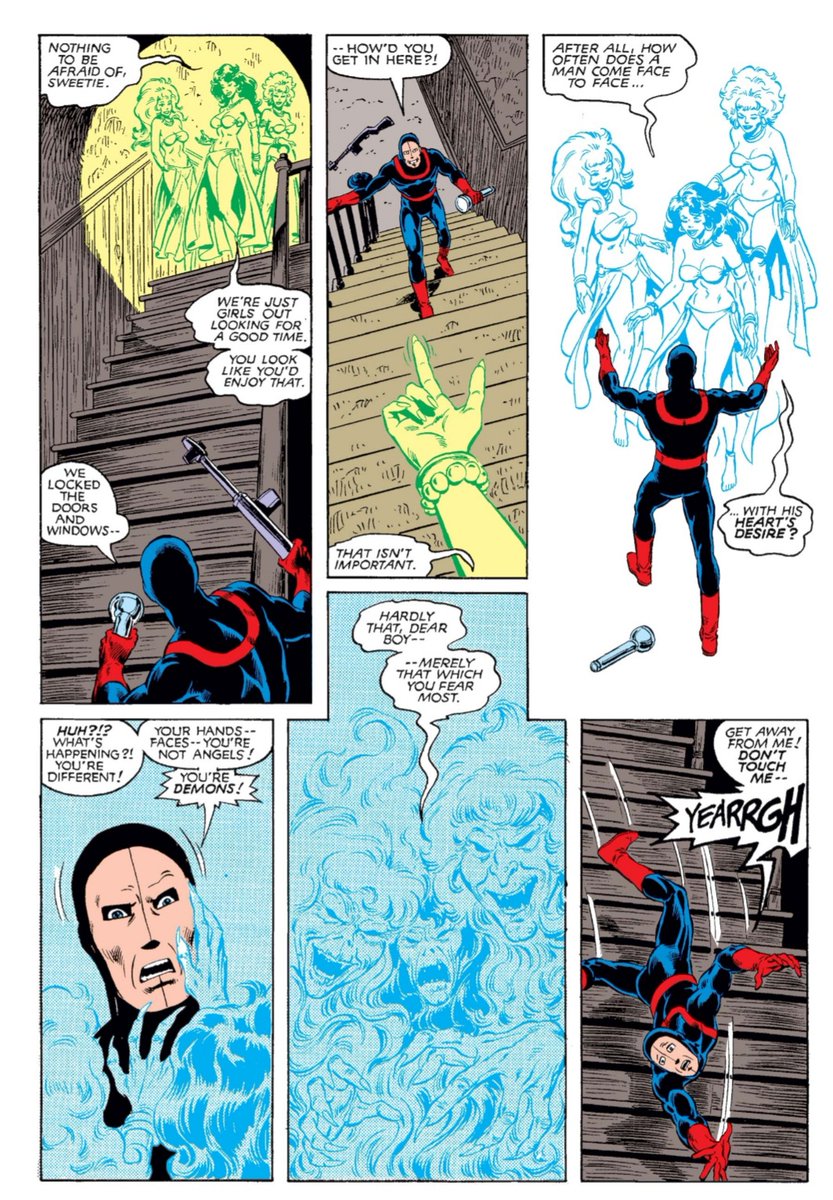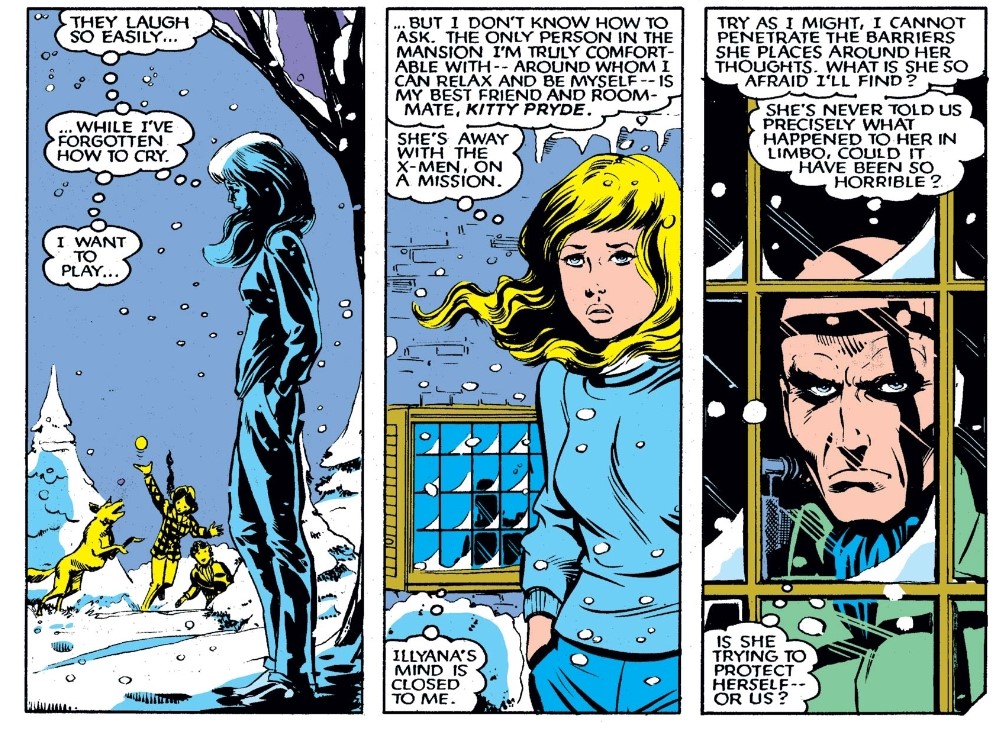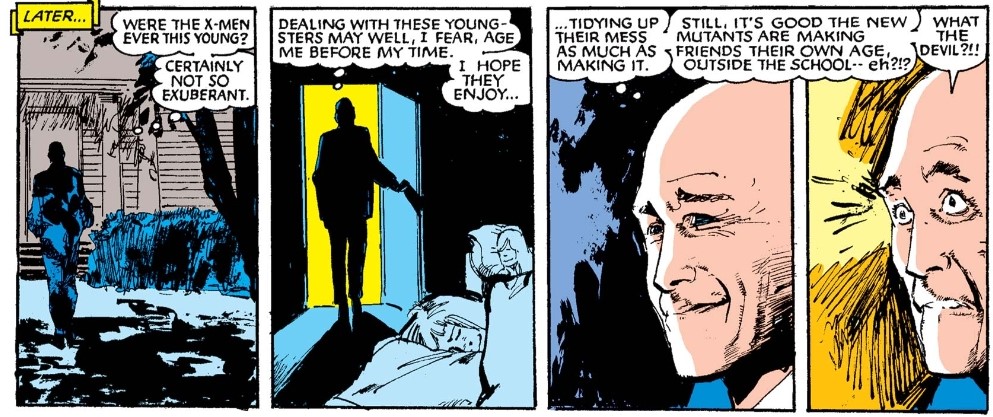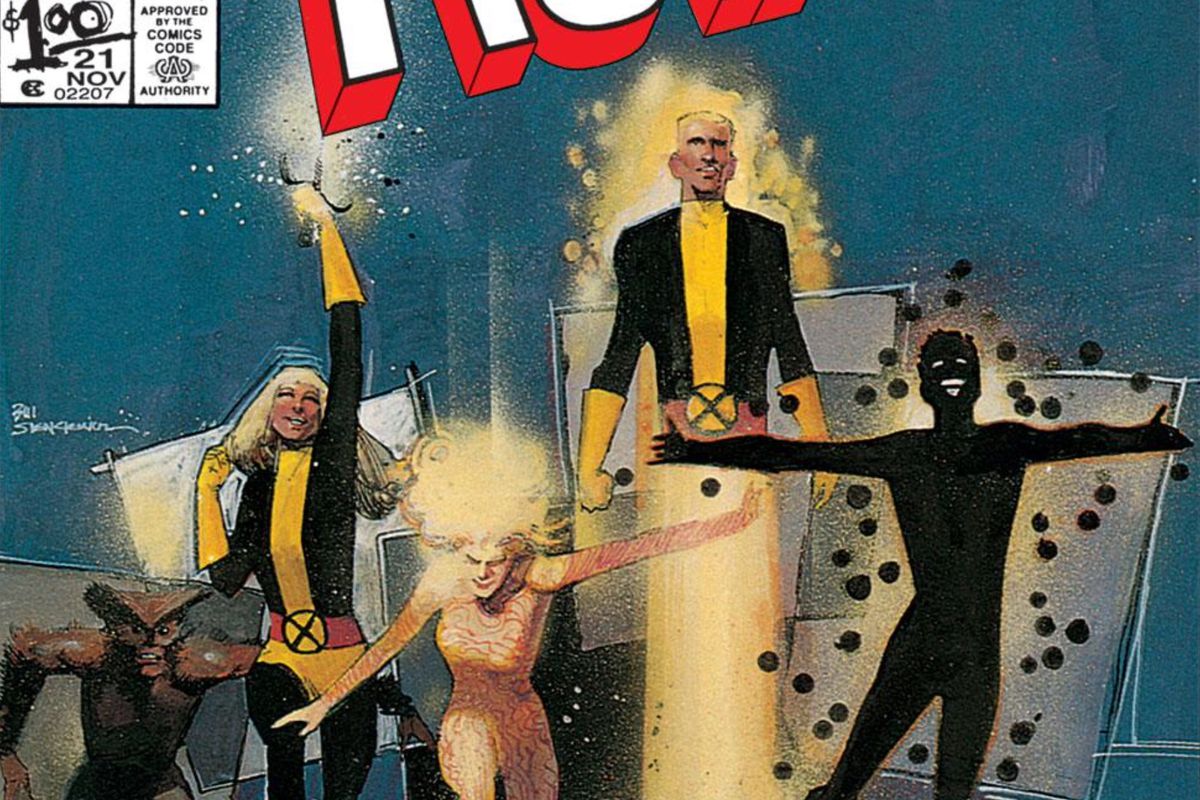
Though presented as the saner option within Excalibur’s love triangle, Kurt’s infatuation with Meggan – and vice versa – presents a number of symbolic complications that undermine the simplistic nice guy/trophy girl dynamic that we often see in the era. #xmen @GoshGollyWow 1/7 

The most commonly discussed complication is the simple fact that Meggan takes on Kurt’s shape when attracted to him. Thus, his attraction to her could be narcissistic in nature, a projection of his desire to be desirable, despite his atypical features. 2/7 

We also, of course, have to mention that when Meggan looks like Kurt, she’s incidentally taking on the appearance of Kurt’s biological mother as well. Kurt never knew Mystique in this capacity, as he was abandoned by her as an infant, but still. 3/7 

On Meggan’s end, the same projection applies. She too had a tragic upbringing as an outcast “monster,” and could be working through self-esteem issues. Or we could go romantic with this and say that he’s teaching her to accept her monstrous beauty. 4/7 

There’s also a bit of power dynamic in the contrast to Brian. As a long-time outcast, Kurt luring the conventionally beautiful woman away from the conventionally beautiful Brian, could be seen as something of an ego trip for Kurt, an unfavorable reading, but worth noting. 5/7 

Also in the mix, however, is Kurt’s habit of delighting in performative fantasy. As someone who was raised on television, Meggan is uniquely capable of participating in those fantasies – perhaps even uniquely vulnerable to their charms and, by extension, Kurt’s. 6/7 

Overall, then, Claremont weaves in enough complications to the Kurt/Meggan ship to provide the reader with some doubts about the validity of the duo as the idealized alternative to Meggan/Captain Britain. 7/7 

• • •
Missing some Tweet in this thread? You can try to
force a refresh







